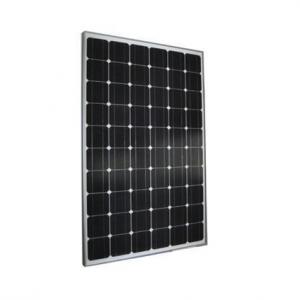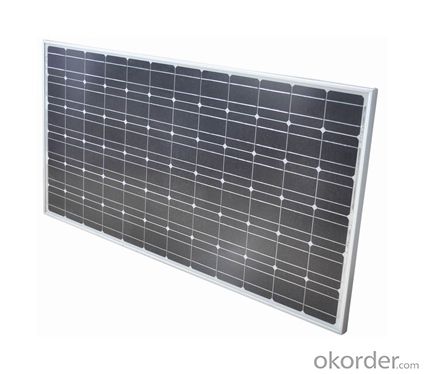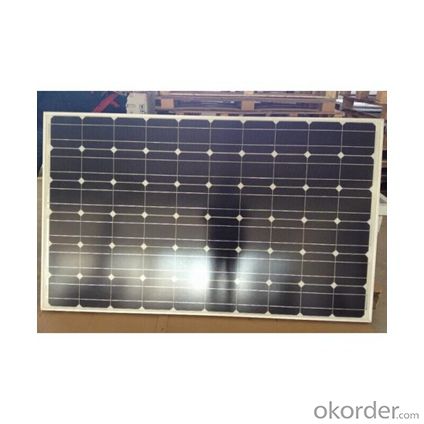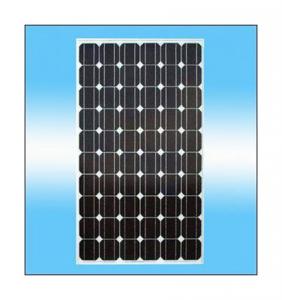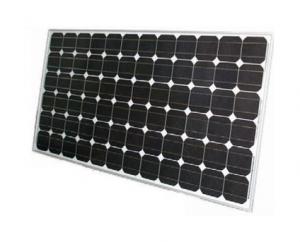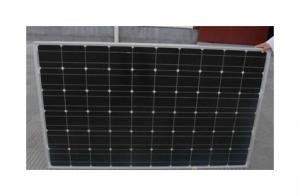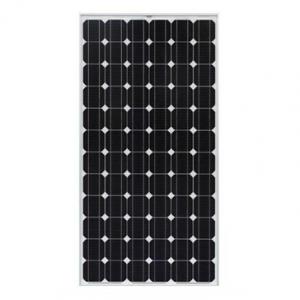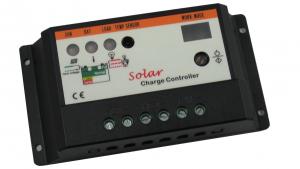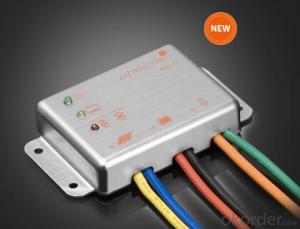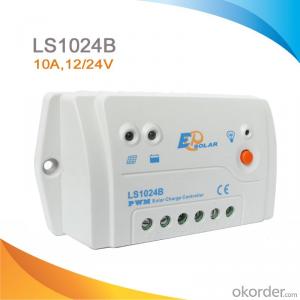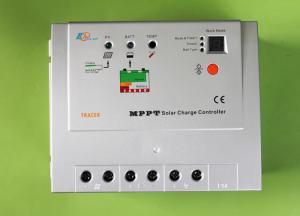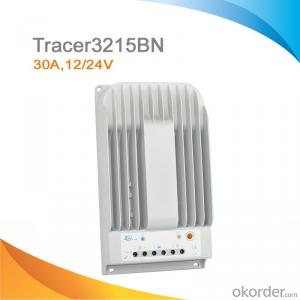Epever Solar Controllers Compatible Solar Modules Mono-Crystalline 125*125 260W Module
OKorder Service Pledge
OKorder Financial Service
You Might Also Like
Solar Module Descriptions:
Our modules are high efficiency photovoltaic modules using silicon nitride coated polycrystalline silicon cells. The solar module can produce maximum power output, even under weak light. It is able to resist moisture and etching effectively, and not affected by geology.

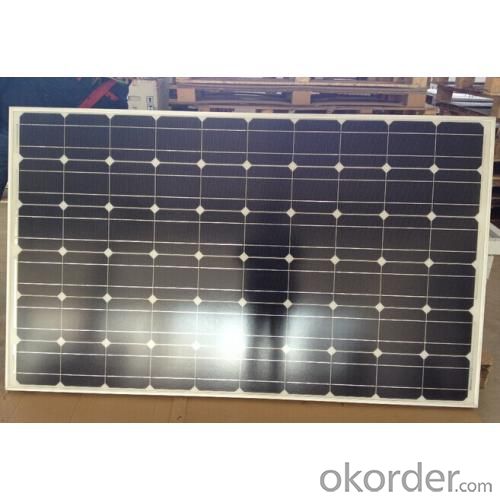
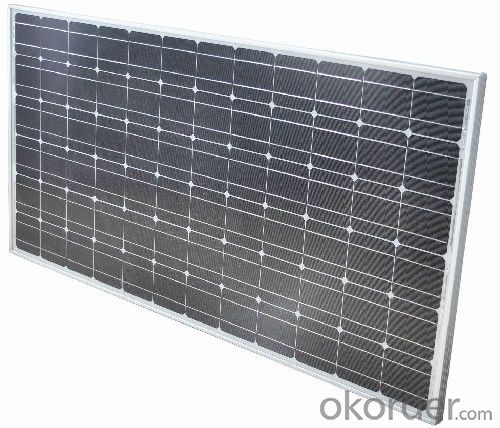
Electrical Characteristics
Max-power (W) | 260 |
Max-Power Voltage (V) | 52 |
Max-Power Current (A) | 5.01 |
Open-Circuit Voltage (V) | 62.9 |
Short-Circuit Current (A) | 5.50 |
Mechanical Characteristics
Cable type, Diameter and Length | 4mm2, TUV certified, 1000mm |
Type of Connector | Compatible with MC4 plug |
Arrangement of cells | 6*12 |
Cell Size | 125*125 |
Dimension | 1580*1069*45 |
Weight | 20.5Kg |
Glass, Type and Thickness | High Transmission, Low Iron, Tempered Glass 3.2mm |
Features
Guaranteed positive tolerance 0/+5w ensures power output reliability
Strong aluminum frames module can bear snow loads up to 5400Pa and wind loads up to 2400Pa.
Excellent performance under low light environments (mornings evenings and cloudy days)
12 years for product defects in materials and workmanship and 25 years for 80% of warranted minimum power.
Certifications and standards: IEC 61215.
Manufactured according to International Quality and Environment Management System (ISO9001, ISO14100).
FAQ
Q: What kind of loads can I run on PV?
With a correctly designed PV system you can power almost any electrical load. However, as the load size increases the expense also increases. Loads like hot water heaters, air conditioners, room heaters and electric stoves should be avoided. The added cost of trying to power loads like these is very cost prohibitive. If these loads have to be powered it will be a lot less expensive to change the appliance to use an alternative fuel type like propane.
Q: When do I need a charge controller and why?
The safest way to figure out if you need a charge controller is to take Battery Amp Hour Capacity and divide this by the Solar Panel max. power amp rating. If the quotient is above 200, you don't need a controller. If the number is less than 200 than you need a controller.
For example if you have a 100 amp hour battery and a 10 watt panel, you take 100 and divide it by .6 (600mA) and you get 166.6. Since this is less than 200 you need a charge controller. If you have a five-watt panel in the above example you take 100 divided by .3 (300mA) and you come up with 333.3. Since this is larger than 200 you do not need a charge controller. However you still need a blocking diode, to prevent the battery from discharging to the panel at night. So as a general rule of thumb you don't need a charge controller unless you have more than five watts of solar for every 100-amp hours of battery capacity.
Q: What is PV & how does it work?
PV stands for photovoltaic. Photo = Light and Voltaic = Electricity. A solar cell converts light to electricity.
A solar cell is made of silicon. Computer chips are made of this same material. Basically, when light strikes the surface of a solar cell some of it is absorbed into the silicon. This light energy bumps the electrons loose and causes energy to flow.
By packaging approximately 36 solar cells together a solar panel or a solar module is created. When you have more then one solar panels you create a solar array.
- Q: Can a solar controller be used with solar-powered indoor transportation systems?
- Yes, a solar controller can be used with solar-powered indoor transportation systems. A solar controller is responsible for regulating the flow of electricity from the solar panels to the battery or load, and it ensures that the battery is charged efficiently and protected from overcharging or discharging. In the case of solar-powered indoor transportation systems, the solar controller would play a crucial role in managing the power generated by the solar panels and delivering it to the propulsion system or other electrical components of the vehicle. By using a solar controller, the system can optimize the power conversion and utilization, maximize the efficiency of solar energy utilization, and ensure the longevity of the battery. Therefore, a solar controller is an essential component for integrating solar power into indoor transportation systems.
- Q: What is the maximum number of solar panels a solar controller can handle?
- The maximum number of solar panels a solar controller can handle depends on the specific model and its specifications. Each solar controller has a maximum input voltage and current rating, which determines the number of solar panels it can effectively manage. It is crucial to review the product's documentation or consult with the manufacturer to determine the maximum capacity of solar panels that a particular solar controller can handle.
- Q: What are the signs of a faulty solar controller?
- Some signs of a faulty solar controller include inconsistent or incorrect readings on the controller display, failure to charge the battery properly, irregular or no power output from the solar panels, overheating of the controller, and unusual noises or smells coming from the controller.
- Q: How does a solar controller handle battery temperature compensation for charging?
- A solar controller handles battery temperature compensation for charging by monitoring the temperature of the battery and adjusting the charging voltage accordingly. As the battery temperature rises, the voltage is reduced to prevent overcharging and potential damage to the battery. Similarly, if the battery temperature drops, the voltage is increased to ensure proper charging. This temperature compensation feature helps to optimize the charging process and extend the lifespan of the battery.
- Q: Do solar controllers have built-in battery temperature compensation?
- Yes, solar controllers often have built-in battery temperature compensation. This feature helps to ensure optimal charging and prolong the lifespan of the batteries by adjusting the charging voltage based on the temperature of the battery.
- Q: What are the advantages and disadvantages of a PWM solar controller?
- Advantages: 1. PWM solar controllers excel in efficiently converting solar energy into usable electricity through their high energy conversion efficiency. This maximizes the power output from solar panels. 2. Cost-effectiveness is a notable advantage of PWM solar controllers, making them a preferred choice for smaller solar installations or individuals with budget constraints. 3. Simplicity characterizes the design and functionality of PWM solar controllers. They are easy to install and operate, making them suitable for DIY solar projects or individuals with limited technical knowledge. 4. Battery protection is a built-in feature of PWM solar controllers, safeguarding connected batteries by preventing overcharging, over-discharging, and reverse current flow. This extends the lifespan of batteries. 5. PWM solar controllers are compatible with various battery types, including lead-acid, gel, and AGM batteries. This versatility allows users to select the battery type that best meets their requirements. Disadvantages: 1. PWM controllers lack the ability to regulate the voltage output from solar panels, unlike MPPT solar controllers. This can result in lower power generation when the solar panel voltage does not match the battery voltage. 2. PWM solar controllers may struggle to efficiently charge batteries in low light or overcast conditions, leading to potential power loss due to their reduced effectiveness in harvesting energy from weak sunlight. 3. PWM solar controllers are best suited for small to medium-sized solar systems, limiting their scalability. Expanding the solar array in the future may require upgrading to an MPPT controller, which can handle higher power capacities more efficiently. 4. Heat dissipation is a concern with PWM solar controllers as they tend to generate more heat compared to MPPT controllers. This can reduce efficiency and potentially impact the controller's lifespan if not managed properly. 5. While reliable and effective, PWM controllers lack advanced features found in MPPT controllers such as remote monitoring, data logging, and advanced battery management options.
- Q: Solar street light controller only one button and digital display, would like to ask experts to learn how to design his time, the power is mainly want to know the specific mode of operation, please help explain the master
- Debug mode (6 ·): used for system debugging, when the optical signal is closed load, no light signal load, easy installation and commissioning check the correct installation of the system. Normally open mode (7 ·): The power load remains in the output state, which is suitable for 24 hours power supply.
- Q: Can a solar controller be used with flexible solar panels?
- Yes, a solar controller can be used with flexible solar panels. The solar controller regulates the flow of electricity from the panels to the battery, and it is compatible with both rigid and flexible panels.
- Q: How do I protect a solar controller from power surges?
- To protect a solar controller from power surges, you can use a surge protector or a surge suppression device. These devices are designed to divert excess voltage away from your controller and prevent damage caused by power surges. Make sure to select a surge protector that is specifically rated for solar applications and install it between the solar panels and the controller. Regularly inspect and maintain the surge protector to ensure its effectiveness in safeguarding your solar controller.
- Q: How does a solar controller prevent overcharging of the system?
- A solar controller prevents overcharging of the system by regulating the flow of electricity from the solar panels to the battery. It constantly monitors the battery voltage and temperature, and when it reaches a certain threshold, the controller reduces or stops the charging process to prevent overcharging. Additionally, some advanced solar controllers use pulse width modulation (PWM) or maximum power point tracking (MPPT) techniques to optimize the charging efficiency and prevent overcharging.
Send your message to us
Epever Solar Controllers Compatible Solar Modules Mono-Crystalline 125*125 260W Module
OKorder Service Pledge
OKorder Financial Service
Similar products
Hot products
Hot Searches
Related keywords
